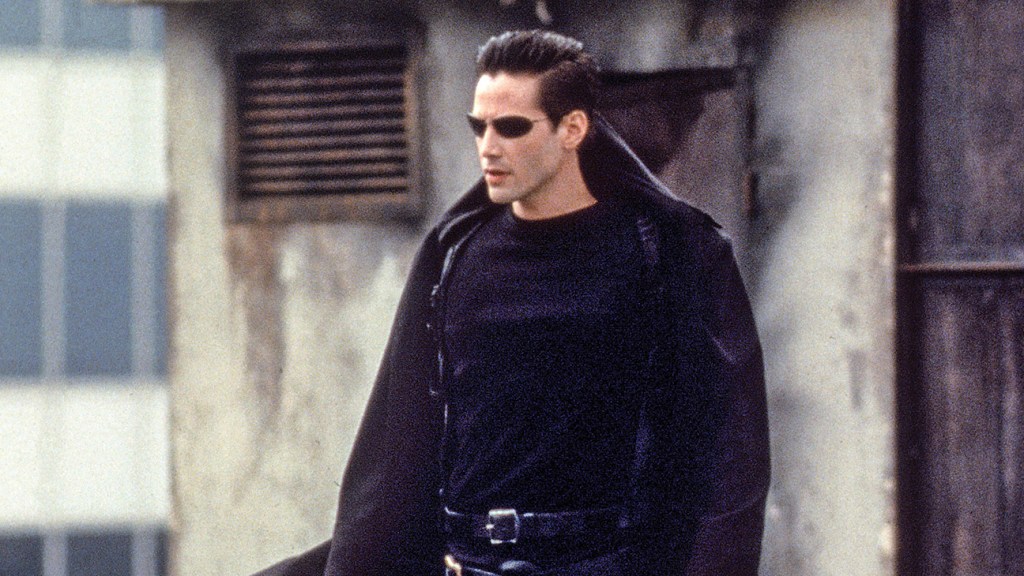
Keanu Reeves as Neo in The Matrix. THR’s review said the film “is an adrenaline rush from the start and pushes the envelope in stylish, inspired action sequences.”
Warner Bros./Courtesy Everett Collection
Twenty-five years ago, The Matrix’s prescient AI-centric narrative, groundbreaking visuals and oodles of leather were enough to make any viewer say, “Whoa.”
Lana and Lilly Wachowski’s journey with the sci-fi epic began in 1994, when Warner Bros. exec Lorenzo di Bonaventura, impressed with their script for the thriller Assassins, signed the duo to a three-feature deal. After earning critical praise for 1996’s Bound, which starred Jennifer Tilly and Gina Gershon as women who plot to rip off the Mafia, the filmmakers had built enough clout to lead the more ambitious The Matrix. Their script centered on Neo, a computer hacker who learns that humans have been enslaved in a simulation engineered by artificially intelligent machines. Will Smith passed on it, so Keanu Reeves landed the lead alongside Laurence Fishburne, Carrie-Anne Moss and Hugo Weaving.
The Wachowskis took influence from Hong Kong’s martial arts movies, which employ wires and pulleys to propel performers, and had their stars undergo months of intensive combat training before the shoot. Costume designer Kym Barrett oversaw the futuristic wardrobe.
“I wanted to find a modern version of something that could move like a cape,” she said of the long leather coats in 2019.
Upon its release on March 31, 1999, The Matrix became a worldwide phenomenon, grossing $463 million ($863 million today) and collecting four Oscars. Three sequels followed, not to mention plenty of imitators.
“Keanu was extraordinary, and it was a wonderful group of people,” Joe Pantoliano, who played Cypher, tells THR. “I haven’t had that kind of experience on a lot of jobs.”
This story first appeared in the March 27 issue of The Hollywood Reporter magazine. Click here to subscribe.









